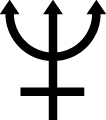You are here
Planet Viewing
Mercury
☿The Sun’s closest planet is in the evening sky in late January to early February, early April (its best and brightest evening viewing), late July to August, and November to early December. It appears in the morning sky in late February through mid March, late May to midd June, and mid to late September (best morning showing).
Venus
♀The brilliant planet starts 2023 as the Evening Star, and continues through August. Then it vanishes from view as it crosses between Earth and Sun. It will return, as the Morning Star, by late August, and will stay in the morning sky until December.
Mars
♂Mars can vary considerably in brightness, and 2023 is an "off" year for the Red Planet. Getting progressively dimmer, our fourth planet from the Sun will vanish into the sunset in early October and not come back into view again until the second week of January 2024.
Jupiter
♃ Gas giant Jupiter starts the year off in the constellation Pisces, moves over to Cetus (the Whale), moves back over to Pisces, and eventually crosses into Aries where it stays for the remainder of the year. Jupiter's slivery-white brilliance will be especially enjoyable from October 11 - November 23 when it is at its brightest!
Saturn
♄ Saturn appears yellowish-white and is only of moderate brightness, and the famous rings are visible only in a telescope this year. Saturn begins 2023 in constellation Capricornus, then moves over into Aquarius where it remains until 2024.
Uranus
♅ With clear, dark skies and good vision, Uranus can be viewed with the naked eye! In fact, a small telescope could reveal its tiny, green disk! It will be brightest from October 11 - December 17.
Neptune
 The bluish-hued world of Neptune is only visible with good binoculars or a telescope. It starts 2023 in the constellation Aquarius, then crosses over into Pisces where it remains for the rest of the year, being brightest from July 21 - December 17.
The bluish-hued world of Neptune is only visible with good binoculars or a telescope. It starts 2023 in the constellation Aquarius, then crosses over into Pisces where it remains for the rest of the year, being brightest from July 21 - December 17.



